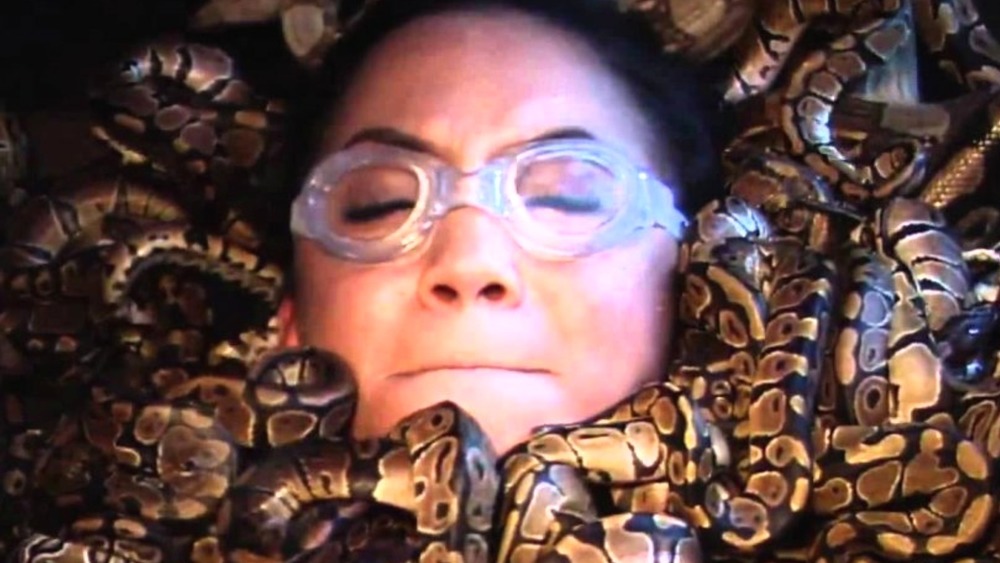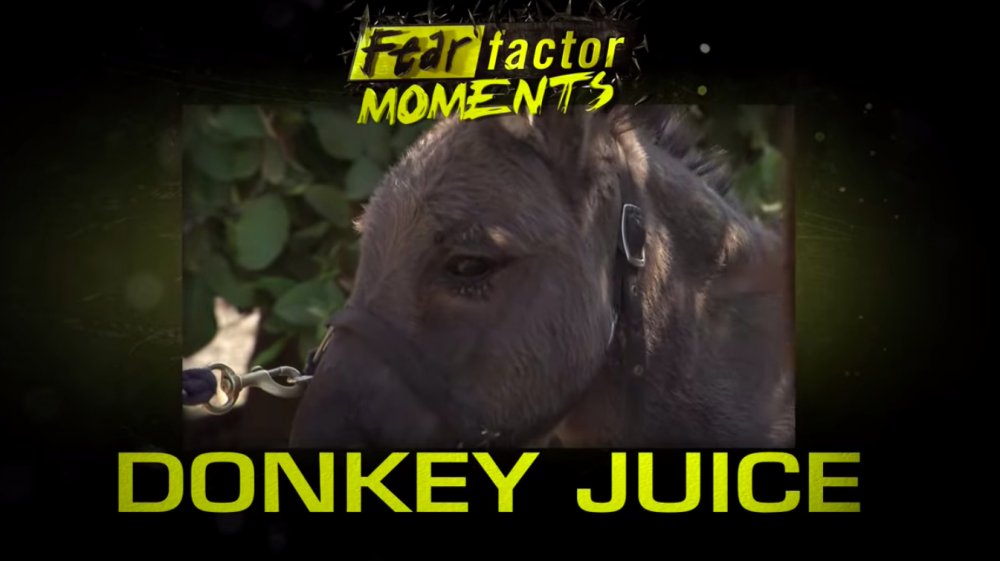The Real Reason Fear Factor Was Canceled
In television, everyone has a price. For some, a mere Klondike bar will have them eating out of the palm of your hand. Others might require more potent forms of coercion, like the withholding of Trix from the world's most cereal-addicted rabbit. But not everyone is willing to turn tricks for Trix. Some require cold hard cash, and are willing to confront their deepest, dirtiest fears to do it. And that's the premise of Fear Factor.
While it wasn't the pinnacle of thought-provoking television, Fear Factor was proof that ordinary people can do extraordinary things, and it certainly wasn't the worst show on TV. The show ran from 2001 to 2006 on NBC, according to Life and Style Magazine, before it was dropped for low ratings, then brought back in 2011 with "even bigger stunts." Unfortunately, the stunts were a little too big. Or, shall we say, donkey-sized.
The reason Fear Factor was canceled was because of an episode titled, "Hee Haw! Hee Haw!", which is pretty cringey in its own right, but nothing compared to the scene for which it was named.
The scene that got Fear Factor canceled
In the scene, pairs of twins played horseshoes to determine who would get the honor of drinking "donkey juice." In this case, that means their drink options from bartender Joe Rogan were either 30 ounces of donkey urine or 24 ounces of male donkey reproductive fluid — that's a pint and a half of the stuff.
Somehow, a member of each team guzzled the stuff down and survived til the next round. Unfortunately, the show wouldn't survive the backlash that followed. The show hadn't even aired when the network pulled the episode. Reading about it in TV Guide was presumably disgusting enough for the average American.
According to TMZ, the episode did eventually air... in Denmark, which also has its own version of the show. It's not alone — there are around 40 international spin-offs of Fear Factor, including Pakistani and Albanian versions.
The real tragedy was that it was only the second of three challenges for "Fear Factor: Tijuana", meaning that what contestants called "the hardest 15 minutes of [their] life," brought them neither fame nor fortune; only the pride of knowing they were able to do something that made others around them gag just watching.
"If you vomited you would have to start over, I ended up just vomiting in my glass and drank that. The camera men were vomiting," a contestant told Fox News. "It smells. It's so bitter, and it has a little hint of hay."
Well, at least they've got a backup career as a "semmelier."
Fear Factor returns in even more Ludacris form
The revamped version of Fear Factor had an eight episode run before "Hee Haw!" donkey punched the series into submission in 2012, but like the Terminator, it still refused to die.
The show would return from the grave in 2017, this time on MTV, where it's going strong with host Chris Bridges, who you probably know as Ludacris. The concept is basically the same, but it seems MTV keeps things a bit more structured, and is a little more cautious about what lines it crosses. Instead of "donkey juice," contestants might have to eat 100 year-old eggs. Still nothing to sniff at, but at least they won't taste like bitter, gooey hay.
Each episode is divided into three parts. First up is "Beat the Beast," which usually involves some sort of intimate act with live creepy crawly critters. The first round winner gets a "FearVantage," which is the lamest way of saying that they'll get a slight advantage in the second round. The next round you must "Face Your Fear," which challenges contestants to overcome a fear that they all have in common. "We study what they're really scared of, and try to cater to their worst fears for what they're going to do, challenge-wise," Ludacris told GQ. It's not mean-spirited, but it's fun. And definitely scary."
The "Final Fear" takes after the original series' finales, usually consisting of some extreme physical challenge. Whoever wins gets that sweet $50,000 prize, but factoring in inflation, $50,000 in 2019 is equal to about $34,000 in 2001, when the show began. So, technically, conquering your fears isn't as ludicrously lucrative as it used to be.
Either way, it's still beats a lifetime of cubicle work, also known as "Existential Dread Factor". You can even audition for the show yourself, but only if fear — and donkey fluids — aren't a factor for you.


